Description of the application
Rotterdam Water City 2025, the Netherlands, is an ambitious programme to address water storage and quality in the city centre through green roofs, water plazas and smart levees. The city is divided in three major districts, each of it having a different role and strategy towards water. Among them, City Port, built on reclaimed land outside the dykes, is a floating city concept.Lessons learned
The developments in the water management regime in Rotterdam show that Rotterdam is moving towards a more transformative urban water management planning regime. The development of urban water management policy is currently integrated with urban planning. Planners of urban water retention infrastructure successfully utilize the opportunities that urban revitalization presents by considering the local context. The role of Rotterdam Water City 2035 has been crucial in changing towards the transformative perspective. In this policy innovation niche, for the first time urban planners and urban water experts, developed a joint long term vision for the city. Because it was a non-official policy process, more radical ideas and a longer planning horizon were possible than in official policy documents. In this vision, water retention contributes to the upgrading of neighborhoods by increasing living quality. Many innovations that were developed in the project were mainstreamed in official policy. Examples are green roofs, water retention squares and floating urbanization. The development of the Rotterdam Water City 2035 policy niche was facilitated by changes in the regime during the preceding years. Consequently, urban water professionals were receptive to the integrated approach that was applied in the project. Mainstreaming of innovative concepts in official policy was further enabled by executive and political support and the presence of change agents in all participating organizations. The changes in Rotterdam water management can therefore be explained by reinforcing developments on the three levels of the Multilevel Perspective. Macro drivers such as climate change, urbanization and the change in European and national water policies, regime receptivity for a new approach on meso-level, and the policy niche of Rotterdam Water City 2035 on micro level reinforced each other and led to the development of a transformative perspective in urban water infrastructure policy. Despite the success of Rotterdam Water City 2035, integration of urban planning and water management is currently mainly limited to a number of demonstration projects. Therefore, we cannot yet speak of a transition. The development of new institutional accountability mechanisms for multifunctional water systems, organizational capacity building, process innovation and the involvement of key stakeholders are crucial steps for the eventual transformation of urban water infrastructure.Implementation cost
Estimated financial cost for the implementation of the measures, given as a cost range.
Flood management measures
Which flood management measures have been applied? Multiple measures may be specified.
Project
Projects from which information has been harvested. Multiple projects may be specified.
Country
Country in which the application (case study) is located. In case of a transboundary application multiple countries are specified.
Last modified: Sept. 13, 2016, 4:30 a.m.


 Ελληνικά
Ελληνικά